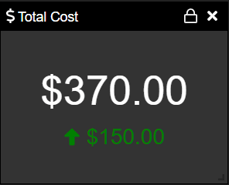Discrete Event Simulator
Innoslate’s real-time Discrete Event Simulator allows you to execute a complex system as a discrete sequence of actions in time.
Sections Available in Discrete Event Simulator
| Function | Description |
| Overview | Gain an understanding of the simulator, its capabilities, and how it can be utilized to model and simulate systems in Innoslate. |
| Classic Mode | The Classic Mode offers a traditional approach with event-based modeling and simulation execution on Innoslate. |
| Feature Panels | Discover the variety of featured panels in the simulator, providing interfaces for configuring simulation settings on Innoslate. |
| Global Tracker | Learn about the Global Tracker that tracks global variables during a discrete simulation. |
| Simulator Reports | Learn how to generate detailed reports and analyze simulation results in the Discrete Events Simulator. |
Overview
Discrete Event Simulation (DES) is the process of codifying the behavior of a complex system as an ordered sequence of well-defined events.
Innoslate’s real-time ‘Discrete Event Simulator’ allows you to execute a complex system as a discrete sequence of actions in time. This simulator is designed for analyzing a system or project’s cost, schedule, and performance. Innoslate’s simulation technology can be used for:
- Analyzing complex systems behavior and its parts (assets).
- Predicting system performance including time duration, cost, asset utilization, and resource consumption.
- Identifying process bottlenecks.
- Planning a schedule, allocating cost, asset utilization, and calculating resource performance (Project Management).
- Verifying the correct logical design.
By using Innoslate’s simulator, you can ensure that the simulation model and the functional model remain consistent throughout the lifecycle of your project. This prevents inaccuracies and inconsistencies that often occur when using external simulation tools.
Featured Panels

There are various selections of panels that users can utilize when using the discrete event simulation as shown above. Below we'll go over each panel's options.
Cost Panel

Cost Over Time
Displays a line chart of the incurred costs of the simulation over simulation time.

On startup, a model will pop up to select the panel’s specific options. This panel has an option to select which entities will be shown on the chart. Total can also be selected to get the total cost over time. On the Table of entities shown, the color can be specified for each entity/total.
Note: This chart can be edited and multiple charts can be created.
Reports that can be created from this panel are:
- Cost Over Time Report:
- Generates an Excel report displaying information based on the entities in the report throughout the simulation.
- For this report, you can select the columns, the sort of columns, and the file name.
- Transparent Image Report
- Opaque Image Report
Cost Break Down (Bar)
Displays a bar chart of the incurred costs of each Action run in the simulation.
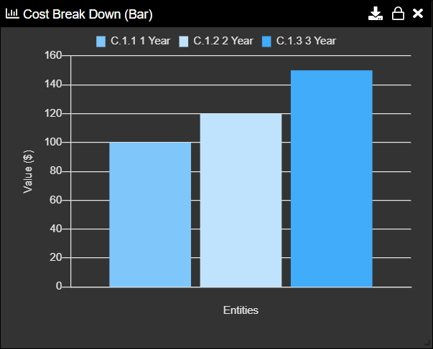
On startup, a model will pop up to select the panel’s specific options. This panel has an option to select which entities will be shown on the chart. On the Table of entities shown, the color can be specified for each entity.
Note: This chart can be edited and multiple charts can be created.
Reports that can be created from this panel are:
- Cost Over Time Report:
- Generates a .csv report displaying information based on the entities in the report throughout the simulation.
- For this report, you can select the columns, the sort of columns, and the file name.
- Transparent Image Report
- Opaque Image Report
Cost Break Down (Pie)
Displays a pie chart of the incurred costs of each Action run in the simulation.
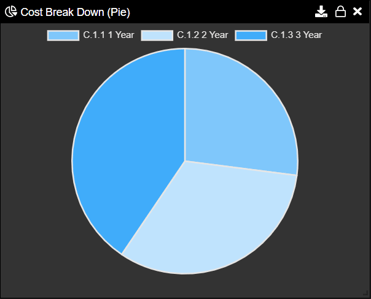
On startup, a model will pop up to select the panel’s specific options. This panel has an option to make the chart a ‘Pie Chart’ or ‘Donut Chart’ and which entities will be shown on the chart. On the Table of entities shown, the color can be specified for each entity.
Note: This chart can be edited and multiple charts can be created.
Reports that can be created from this panel are:
- Cost Over Time Report:
- Generates a .csv report displaying information based on the entities in the report throughout the simulation.
- For this report, you can select the columns, the sort of columns, and the file name.
- Transparent Image Report
- Opaque Image Report
Total Cost
Displays the current simulation cost live as the simulator is running through the model.
Time Panels

Gantt Chart
Displays a Gantt chart illustrating the start and end points of all Actions in a schedule.

The ‘Gantt Chart’ panel has options on the top right of the panel:
| Arrows |
The ‘Arrow’ option allows arrows on the Gantt chart to be turned on/off. |
| Line Color |
The ‘Line Color’ option allows the line colors from the Gantt chart to be turned on and off (line Color is added to entities in loops). |
| Magnet |
The ‘Magnet’ option will reset the zoom and scale of the Gantt Chart. |
Zoom In |
The ‘Zoom In’ option will zoom into the Gantt Chart, increasing the time scale and making the entities larger. |
Zoom Out |
The ‘Zoom Out’ option will zoom into the Gantt Chart, increasing the time scale and making the entities larger. |
Reports that can be created from this panel are:
- Opaque Image
- Export To Project
- MS project .xml that can re-import the Gantt chart into MS projects.
Tree Map
Displays a tree map of executed Actions with tile sizes proportional to Action duration.
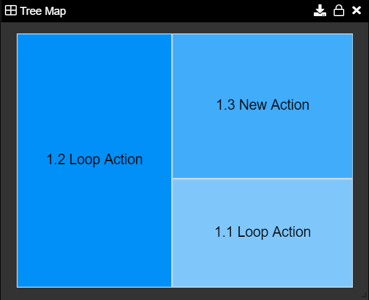
Reports that can be created from this panel are:
- Sim Duration Report
- Generates a .csv report displaying information based on the entities in the report throughout the simulation.
- For this report, you can select the columns, the sort of columns, and the file name.
- Opaque Image
Total Time
Displays the current simulation time live as the simulator is running through the model.
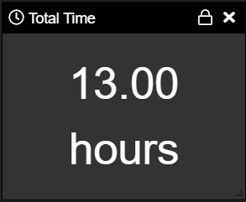
Resource Panels

Resource Over Time
Displays a line chart of all applicable resource amounts over the simulation time.
Final Amounts
Displays a bar chart of the total final applicable resource amounts of the simulation.
Resources (Radar)
Displays a radar chart of an individual resource’s minimum, maximum, and final amounts.
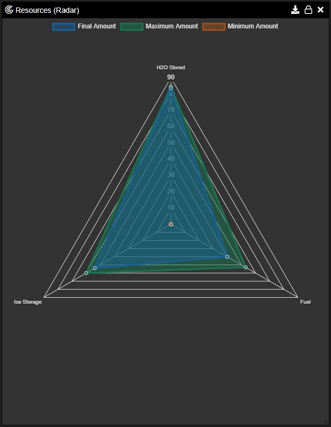
Reports that can be created from this panel are:
- Monte Carlo Resource Report:
- Generates a CSV report of the minimum, maximum, final, and total amounts of each Resource entity per simulation of the Monte Carlo run.
- For this report, you can select the columns, the sort of columns, and the file name.
- Transparent Image Report
- Opaque Image Report
Asset Utilization (Radar)
Displays a radar chart of an individual asset’s amount utilized.
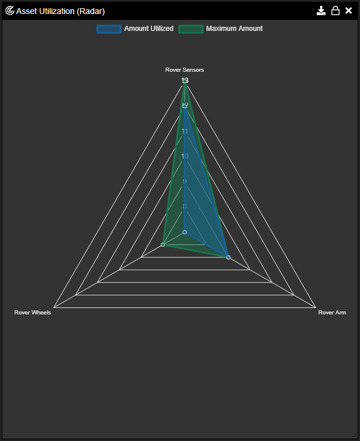
Reports that can be created from this panel are:
- Monte Carlo Asset Utilization Report:
- Generates a CSV report of the maximum and number of times utilized of each Asset entity per simulation of the Monte Carlo run.
- For this report, you can select the columns, the sort of columns, and the file name.
- The report gives the option of raw total time (in milliseconds), formatted total time, or both.
- Transparent Image Report
- Opaque Image Report
Other Panels
Action Trace 3D
Displays a 3D Action Diagram simulating all levels of decomposition live.
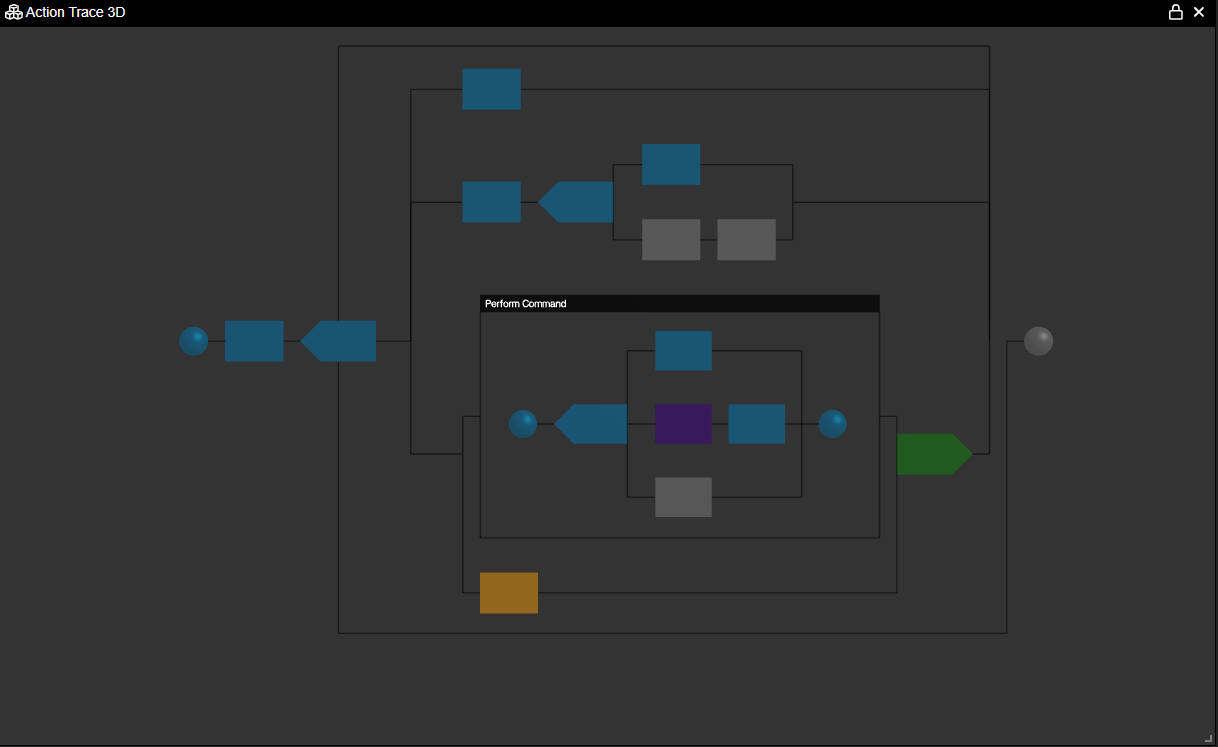
Reports that can be created from this panel are:
- Opaque Image (once Simulation is completed)
Wait States
The Action Trace 3D panels utilize colors to identify the Action’s state during simulation. The table below identifies each state and its appropriate color.
| Color | State | Description |
|---|---|---|
| Gray | Inactive | The Action was not activated or has been killed by a SYNC point. |
| Yellow | Input/Output Wait | The Action is waiting for an Input/Output(s). |
| Purple | Resource Wait | The Action is waiting for a Resource Amount(s). |
| Orange | Asset Utilization Wait | The Action is waiting for enough Asset performers to execute. |
| Maroon | Cloning Operation | The Action is currently being executed through a cloning operation. |
| Green | Executing | The Action is currently executing. |
| Blue | Complete | The Action has completed execution. |
Status
Displays the current Action(s) running or waiting for an Input/Output, Resource, or Asset.
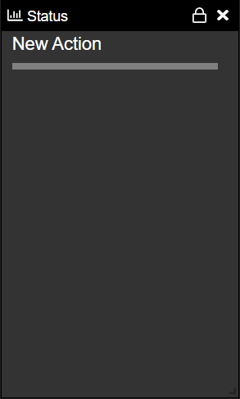
Console
Displays a console showing all scripted print lines and detailed error information.
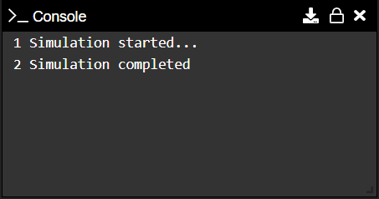
Reports that can be created from this panel are:
- Console Report
- Generates a CSV report of all the lines logged from the console.
- Generates a CSV report of all the lines logged from the console.
Global Tracker
- Add a script to any Action entity in an Action diagram.

2. Enter a script and confirm an entity ID is being tracked in the script. This can be any Action entity in the Action diagram not just the entity with the script. Click ‘Submit’ to save.

3. Go to the Discrete Event Simulator. In ‘Other’ Settings, add the Global Tracker panel to the simulator.

4. Once the Global Tracker panel has been added, play the Discrete Event Simulator. The user interface will track the globals.get to locate values and times of any type of object using the entity ID.
5. The Global Tracker panel now displays a table of Keys (Value Types) and their Values. Click a blue plus button anywhere in the table to expand its display, as shown below 'num' has been selected.

Note: The Console panel and Global Tracker now have color-detailed displays of objects that use the print command or global ID map, respectively.
Simulator Reports
- In the ‘Discrete Event Simulator’ after you run the simulation, select ‘Reports’ in the side menu.

- From this menu, you can select to download an ‘Action Report,’ an ‘Asset Utilization Report,’ a ‘Resource Report,’ or a ‘ Detailed Resource Report.’

Action Report
Generates a CSV report displaying the action’s name, duration, and cost throughout the simulation.
Asset Utilization Report
Generates a CSV report displaying the asset’s name and total time utilized throughout the simulation.
Resource Report
Generates a CSV report displaying the resource’s name and max/min/final amounts after the simulation.
Detailed Resource Report
Generates a CSV report displaying the resource’s name, current amounts, and time throughout the simulation.
Classic Mode
Classic Mode in Innoslate's Discrete Event Simulator offers a traditional approach to simulation, allowing you to model and analyze complex systems with precision. By simulating events based on their occurrence in time, Classic Mode enables you to gain insights into system behavior and performance.
All of the panels are available in both versions (newest version and Classic Mode).

With its intuitive interface, Classic Mode simplifies the process of setting up simulation parameters, defining event sequences, and monitoring simulation progress. You have full control over the simulation timeline and can observe the impact of different events and resource allocations on the system's overall performance.
Tutorial Video
To continue learning about Simulators, Click Here.
(Next Article: Monte Carlo Simulator)

